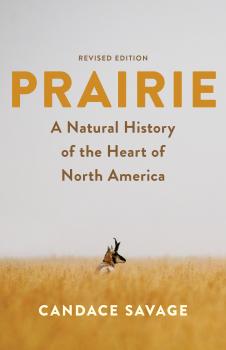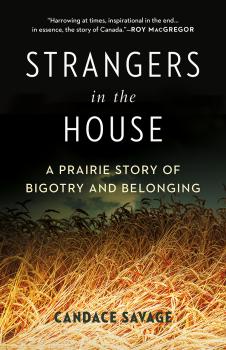Candace Savage
Список книг автора Candace SavageCrows
Who knew that crows are second only to humans as toolmakers and tool users, that they have complex family lives not unlike our own, and that their vocalizations resemble human languages? This witty, charming book introduces readers to these endlessly fascinating creatures. Author Candace Savage explores their evolution and basic biology, diet and food-gathering practices, incredible tool-using capabilities, crow “languages,” tricky social interactions, and their impact on the human imagination as reflected in mythology, literature, and popular aphorisms. Based on extensive research, the book is a lively, loving tribute to these special feathered friends.
Prairie
Praise for the previous edition of Prairie : «Impelled with its sense of the miraculous in nature.» —Globe and Mail Candace Savage’s acclaimed and beautifully written guide to the ecology of the prairies, now revised and updated. This revised edition of Prairie features a new preface along with updated research on the effects of climate change on an increasingly vulnerable landscape. It also offers new information on: · conservation of threatened species, including the black-tailed prairie dog and farmland birds; · grassland loss and conservation; · the health of rivers and the water table; · the effects of neonicotinoid insecticides on prairie wetlands; · the benefits of regenerative agriculture. Illustrated with elegant black-and-white line drawings and maps, this award-winning tome continues to be a highly readable guide to understanding the ecology, geological history, biodiversity, and resilience of the prairies.
Hello, Crow
Will Franny ever prove to her dad that crows and kids can be friends? Franny has a new friend—a crow who brings her presents in its beak. Like a red button! And a silver heart! Franny’s dad doesn’t believe her. He says crows and kids can’t be friends. But Franny knows better. How will Franny prove her new playmate is real? And what will the crafty crow bring next? Award-winning author Candace Savage, whose crow expertise is lauded in popular books such as Bird Brains , motivates families to be present when exploring parks, backyards, balconies, city streets, beaches, and skies.
Strangers in the House
A renowned author investigates the dark and shocking history of her prairie house. When researching the first occupant of her Saskatoon home, Candace Savage discovers a family more fascinating and heartbreaking than she expected. Napoléon Sureau dit Blondin built the house in the 1920s, an era when French-speakers like him were deemed “undesirable” by the political and social elite, who sought to populate the Canadian prairies with WASPs only. In an atmosphere poisoned first by the Orange Order and then by the Ku Klux Klan, Napoléon and his young family adopted anglicized names and did their best to disguise their “foreignness.” In Strangers in the House , Savage scours public records and historical accounts and interviews several of Napoléon’s descendants, including his youngest son, to reveal a family story marked by challenge and resilience. In the process, she examines a troubling episode in Canadian history, one with surprising relevance today.
A Geography of Blood
•Finalist, Hilary Weston Writers’ Trust Prize for Non-FictionWhen Candace Savage and her partner buy a house in the romantic little town of Eastend, she has no idea what awaits her. At first she enjoys exploring the area around their new home, including the boyhood haunts of the celebrated American writer Wallace Stegner, the back roads of the Cypress Hills, the dinosaur skeletons at the T.Rex Discovery Centre, the fossils to be found in the dust-dry hills. She also revels in her encounters with the wild inhabitants of this mysterious land-three coyotes in a ditch at night, their eyes glinting in the dark; a deer at the window; a cougar pussy-footing it through a gully a few minutes' walk from town.But as Savage explores further, she uncovers a darker reality-a story of cruelty and survival set in the still-recent past–and finds that she must reassess the story she grew up with as the daughter, granddaughter, and great-granddaughter of prairie homesteaders.Beautifully written, impeccably researched, and imbued with Savage's passion for this place, A Geography of Blood offers both a shocking new version of plains history and an unforgettable portrait of the windswept, shining country of the Cypress Hills.
Prairie
Thorough, detailed, and scientifically up-to-date, Prairies: A Natural History provides a comprehensive nontechnical guide to the biology and ecology of the prairies, or the Great Plains grasslands of North America, offering a view of the past, a vision for the future, and a clear focus on the present. With a total area of more than 3.5 million square kilometers (500,000 in Canada and the remainder in the United States), the prairies occupy the heartland of the continent, a vast, windswept plain that flows from Alberta south to Texas and from the Rockies east to the Mississippi River. This is big sky country—the largest ecosystem in North America and, until recently, one of the richest and most magnificent natural grasslands in the world. Today, however, the North American prairies are among the most altered environments on Earth.





